Antiquities: Benchmark of the 386th processor and the dashing nineties
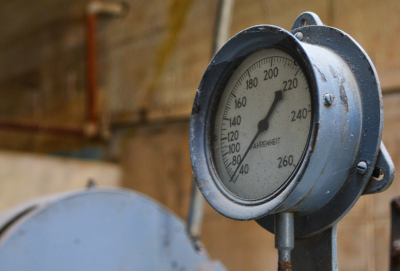 From 2019, it seems that the computer of the early nineties is not capable of anything. The video does not play. Music in MP3 cannot, or can, but with such quality that you will not like it. Crysis will not run. But after I assembled and launched a vintage system of spare parts almost 30 years ago, I wondered: how exactly is he not capable? In what units is this expressed? And how to measure it?
From 2019, it seems that the computer of the early nineties is not capable of anything. The video does not play. Music in MP3 cannot, or can, but with such quality that you will not like it. Crysis will not run. But after I assembled and launched a vintage system of spare parts almost 30 years ago, I wondered: how exactly is he not capable? In what units is this expressed? And how to measure it?
Everything is not easy with measurements, if you try to compare an ancient computer with a modern one: on new PCs, if you succeed in running the old benchmarks, the results will be strange. More modern software will not take off on an old computer. Today there will be a more or less
All related articles:
0. 1992 in the computer press
1. Consider the motherboard of the 386th computer
2. Benchmark of the 386th processor and the dashing nineties <- you are here
I keep a diary of a collector of old pieces of iron in a Telegram .
Characters

So, our main test subject is a computer based on an 80386DX processor with a frequency of 40 megahertz, 32 megabytes of RAM, an 80387 coprocessor and a flash drive instead of a hard drive. So far this is not a computer, but a collection of boards installed on a box from under an old video card. Such a system can be roughly attributed to the years 1991-1992: in those days there were more powerful computers, but such a 386th was quite a reasonable choice.
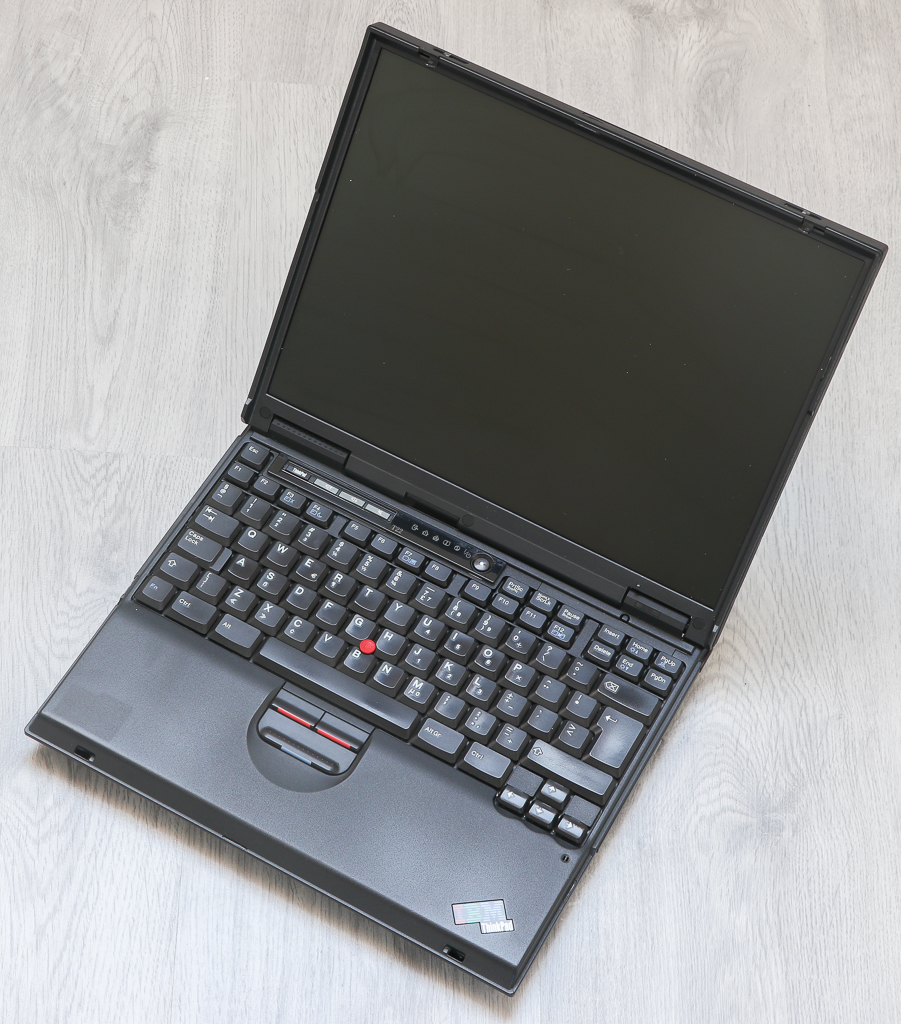
Add a ThinkPad T22 laptop based on an Intel Pentium III processor with a frequency of 900 megahertz, 256 megabytes of memory and a 80 gigabyte hard drive. I talked more about this laptop here . It was released in 2001, about ten years after the 386th.

If so, it would be logical to rewind time another ten years ahead. For this purpose, a moderately vintage desktop based on the Intel X58 chipset, assembled at the beginning of this year , with a Xeon X5690 processor (standard frequency 3.3 GHz, working - 3.9) and 32 gigabytes of memory is ideal. Despite the impressive characteristics, this is a representative of the "still" school of computer construction. You can connect the drive natively to it and boot into MS-DOS without dancing with a tambourine. The motherboard of this computer was released in 2009, but the processor appeared on sale in 2011.
Benchmarks under DOS
Benchmarks in their modern form, as separate programs for the comprehensive measurement of computer performance, did not appear immediately. PC Magazine almost all the eighties measured the most basic performance parameters: the execution of instructions, the speed of data processing in memory, and the like. Most often, the time taken to complete operations was measured, which is a problem: on a modern PC, what used to take minutes is now completed in a fraction of a second.

One of the earliest universal benchmarks is the LandMark test, developed since 1981. Since system performance already depended not only on the processor frequency, but also, for example, on the availability of a coprocessor and the presence of cache memory, manufacturers wrote the results in LandMark in advertising. The calculation method was strange: performance was compared with the IBM PC / AT reference system based on the 286th processor with a frequency of 6 megahertz. The result of the test for your computer is a certain theoretical value of the frequency of the 286th processor, at which it would be equal to the system under study. For example, my 386th processor works the same as the 286th processor at 69.45 megahertz. A Pentium III laptop is as if the 286th were operating at a frequency of 8695 megahertz. Run the test on Xeon and get the result counter overflow:
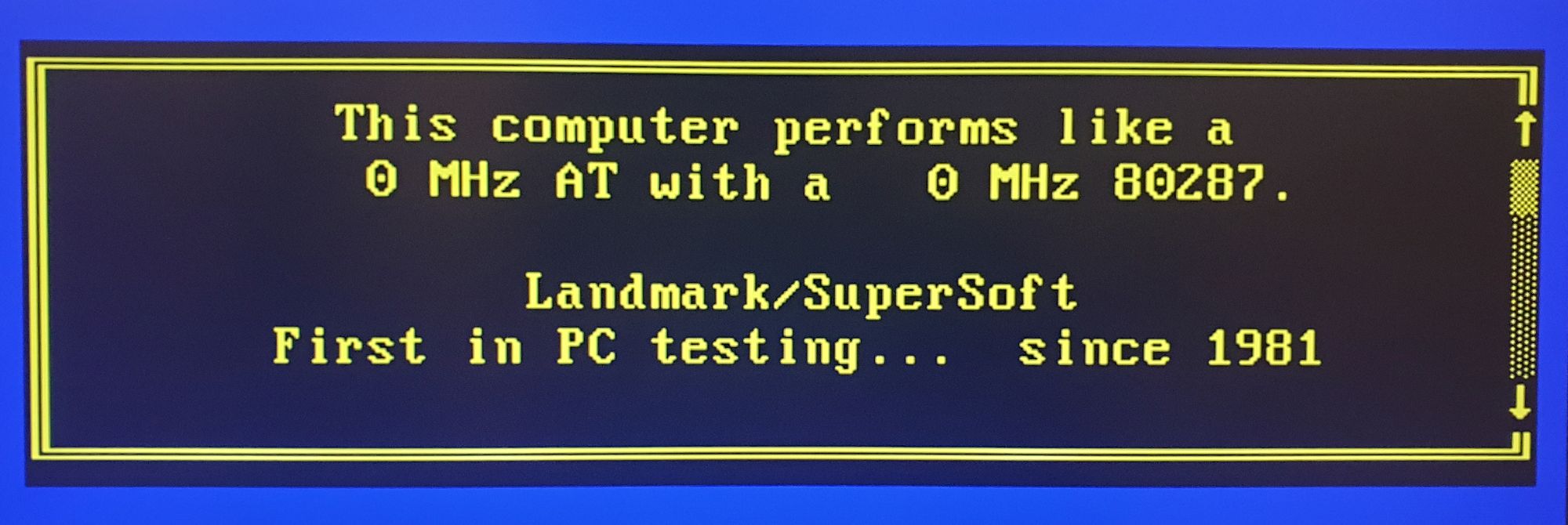
Such situations in the early era of the development of personal computers occurred often: developers could not imagine that the processor frequency, processing power or memory capacity reached such gigantic values. Or they simply did not think: the Y2K problem has similar roots. By the way, the 386th motherboard is partially subject to it - after December 31, 1999, it begins on January 1, 1900. If you set the year directly, then everything works fine. And so, the DOS version of the game SimCity 2000 responds to 32 megabytes of RAM:

In general, LandMark is suitable for comparing computers before 1993 with each other. It also carries out calculations continuously, and thanks to it it is possible to check whether the processor frequency is reduced due to the Turbo button: in some systems, the corresponding contact on the motherboard must be closed, on others - open. But I had to look for something else. The Speedsys benchmark already mentioned in the previous article comes to the rescue:
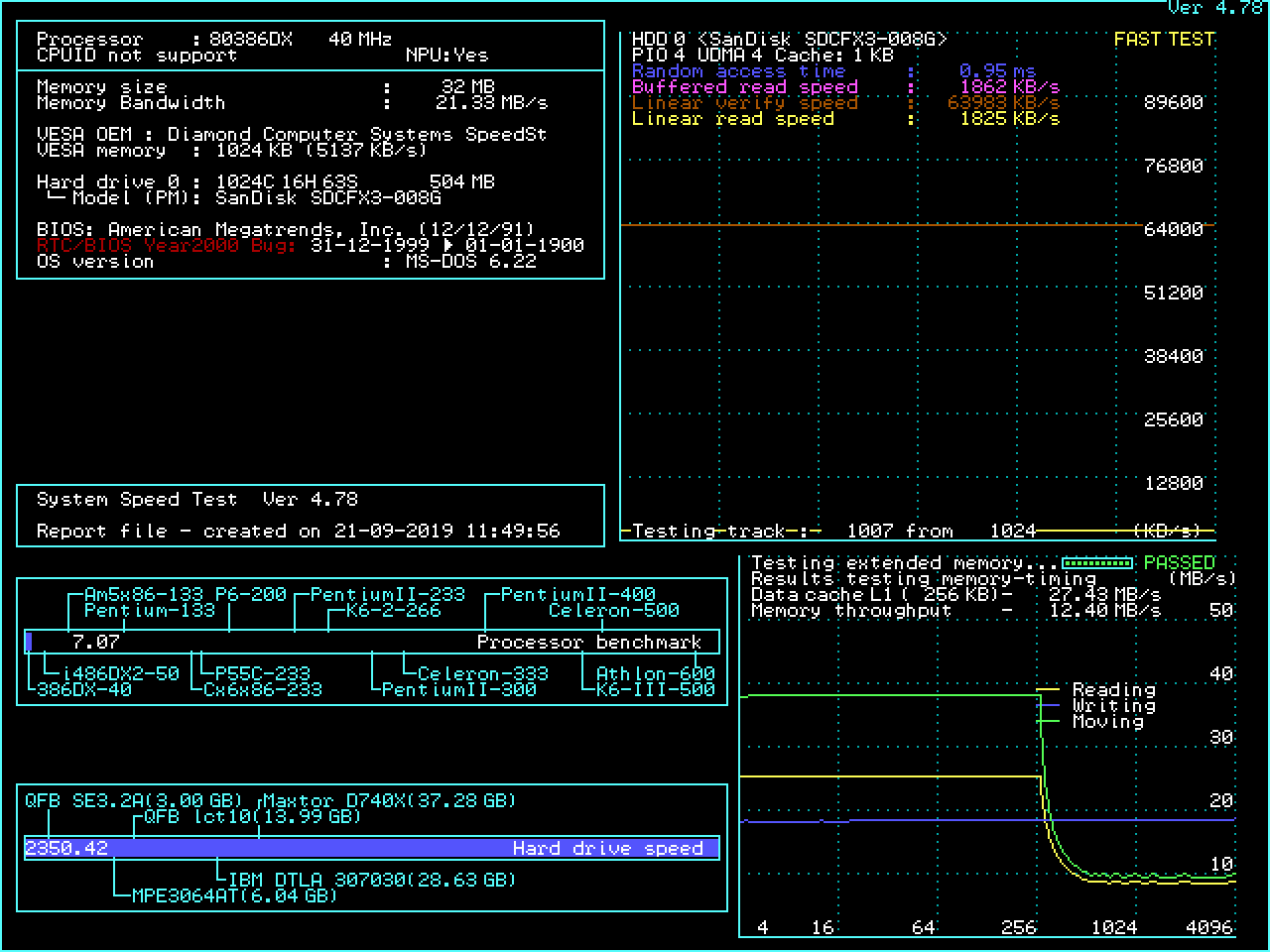
It was developed until the mid-zero, it recognizes processors of that era without problems, and, most importantly, it works fine even on Xeon. The result is 386 (we are interested in the chart at the bottom left) - 7.07 points.
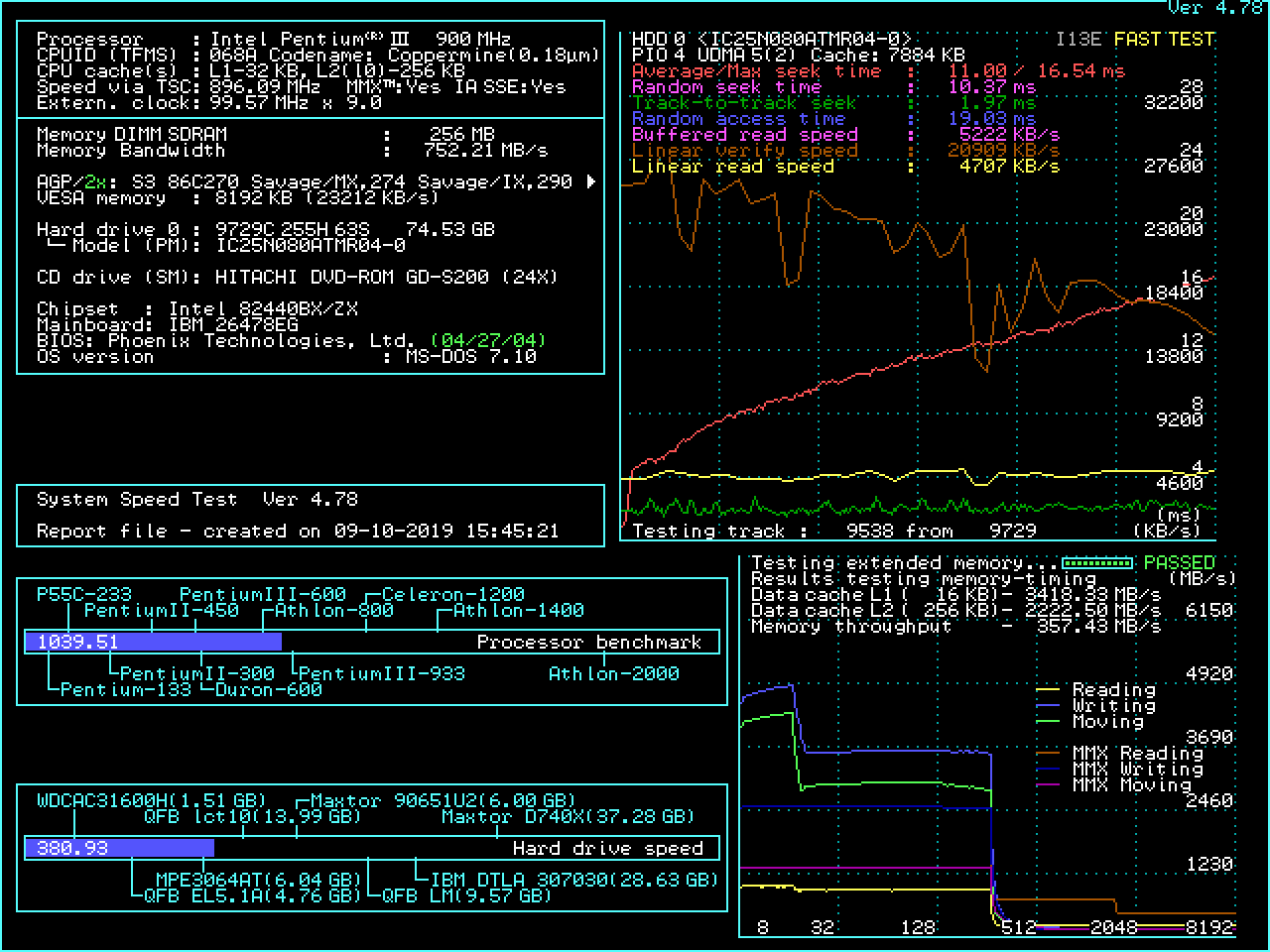
The result on a laptop with PIII-900 is 1039.51 points.

On Xeon, this benchmark can only be launched natively. In DosBox, and in a virtual machine with FreeDos, it did not work for me. The bootable flash drive with DOS helped. The result is 7540.05 points. In other words, from 1991 to 2001, productivity increased by 147 times, from 2001 to 2011 - by 7.2 times. Yes, but this test does not take into account that there are six processor cores in Xeon. By the way, if you think about repeating this strange experiment, I recommend that you turn off all power-saving systems in the BIOS, otherwise you will get a spread in the results.

We need to try some real applications, and games are best here. The first Doom was released at the end of 1993, and on the 386th computers it had about the same effect as in 2009, Crysis. I mean, just now you had not the newest, but decent PC. But Doom comes out and you can't play it. More precisely, you can, but the image will be the size of a postage stamp. It is important to accurately reproduce the test parameters: graphics settings, image size, and the version of Doom itself.

At one time, the host of the YouTube channel Phil's Computer Lab assembled a package of ancient benchmarks for DOS with a convenient batch file. I started Doom and other tests from its assembly. The package has two versions of the Doom benchmark - with minimum and maximum settings. The latter option was almost never used in a real game, since it hides the game menu. But it’s suitable for tests. The benchmark writes the result in its units, which must be converted into frames per second. The 386th showed 28.7 fps “at minimum” and 7.12 fps with maximum quality. Compare with more modern PCs: 461 and 123 fps on the Pentium III, and completely frivolous 426 and 93 fps on the Xeon X5690. The “Doom” obviously does not like something in my most powerful system and it shows lower results than on the Pentium III.
A similar situation is observed in the Norton System Information 8.0 utility. The integrated processor benchmark shows 43.2 points at 386, 344.7 points at PIII and 960 points at Xeon. The development of processors has slowed over the past 15 years, but not so much.
Windows 95 and SuperPi
Okay, running MS-DOS on a six-core machine is still a perversion. What about programs written under 32-bit Windows? Theoretically, they can be run on all three systems. In practice, you need to carefully select the software and benchmark versions: the developers began to abandon Win9x support already in the middle of the 2000s. Some software works fine on Windows 98, but I have a 1991-1992 computer, and Windows 95 is too much for him. We will put it.

Windows 95 as amended by OSR2 was launched in 1996. At 386, she works not only slowly, but not fast either. Saves a huge (by the standards of those years) the amount of RAM, but even the standard Control Panel, the retrocomputer draws leisurely. However, it has one advantage: unlike modern systems, Windows 95 slows down predictably . In any case, PCMark or any other comprehensive benchmark on this system will not start. Something very simple is needed, depending only on the processing power. For example, SuperPi.

On the Vogons forum , I found a version of the SuperPi test that runs on both Windows 95 and Windows 98 and Windows 10. Results for calculating one million decimal places of Pi:
- Xeon X5690: 10.531 seconds
- Pentium III 900: 3 minutes 3.786 seconds
- 80386 DX40: 16 hours 58 minutes 31.445 seconds
Hmm. This processor does not slow down, it maintains a balance of work and personal life. It turns out that the 2001 processor considers the Pi number 332 times faster than the 386th. Xeon is 17.5 times faster than Pentium III, and 5800 times faster than the 386th processor. Good progress, agree.
WinRar and multithreading
The results in SuperPi give a similar alignment in performance growth compared to Speedsys. But they are not able to accurately evaluate all the features of the six-core Intel Xeon, as they are strictly single-threaded. Which benchmark can be run on the old hardware, and on the new one in several threads simultaneously? Suggest options in the comments, but one I found is the WinRAR archiver. On Windows 95 and later PCs, version 3.80 of 2008 worked without problems. Here are the results for Xeon in single-threaded and multi-threaded modes:


This is the result for Pentium III:

With the 386th processor is more difficult. The built-in WinRar benchmark works like this: it continuously archives data, and after receiving a sufficient amount of statistics it shows the result - the speed of archiving in kilobytes per second. On a modern computer, the result is shown after processing about 25-30 megabytes of data. It took more than a day to reach this figure on the 386th processor!

At the end of the second day of the test, I gave up: WinRAR stubbornly did not show the result, but the screenshot above helps to accurately evaluate the performance - about 214 bytes per second. This is 1210 times slower than on the Pentium III. Xeon in single-threaded mode is about 4 times faster than the third Pentium. In multi-threaded mode, it is 15 times faster, although the difference between one thread and several does not correspond slightly to the number of cores - perhaps this is a limitation of the WinRAR code.
findings
First, let's go through the results of benchmarks. My measurements are, by definition, inaccurate: I have a feeling that in the same WinRAR 386th system simply could not digest a large amount of data (for it), and the processor more often stood idle in anticipation than it thought. Nevertheless, three different benchmarks (Speedsys, SuperPi and WinRAR) showed a performance increase hundreds of times between a 1991 and a 2001 computer! The next ten years increased productivity by a maximum of ten times. Again, this is not a completely honest comparison: old benchmarks may not use the new fresh iron instructions.
Let's look at an independent source. Here are the results of the Linpack universal benchmark for computing power for systems starting from the 386th and up to the third generation Core i7 (and with optimization for the architecture, using, where possible, SSE and AVX instructions). The difference between 386-40 (0.53 Mflops), Pentium III-1000 (316.67) and Core i7-3930K (3112.94) shows a similar layout. The growth is almost 600 times in the nineties and only 10 times in zero.
At the end of the last millennium, we observed an explosive increase in the performance of personal computers. In the new century, there was growth, too, and significant, but such crazy progress was no longer. Moreover, in the eighties, from the very beginning of the era of PC-compatible PCs, the development was also not so rapid - 8086 differs from 80386 (according to the results of the same Landmark test) by about 50 times, and not by 500. This makes the nineties a unique phenomenon in the history of computers : We started with the text editor Lexicon and Norton Commander, and ended with streaming audio over the network, 3D games and studio-quality video.
Despite the difference in performance between the six-core Xeon and the 386th processor by a thousand times, half of this article was typed without problems on the old system in Microsoft Word 6.0. Some tasks do not require powerful modern systems at all, their performance is rather eaten up by “convenience” (like synchronization with the cloud) and the approach to writing code. Two days of stress testing in WinRAR showed that my 386th system may not be the fastest, but stable and reliable. So, we will continue research.
In the next article, I plan to explore 386 ancient sound cards. In the meantime, here's another spoiler for another topic, the study of which will take me much more time.
All Articles